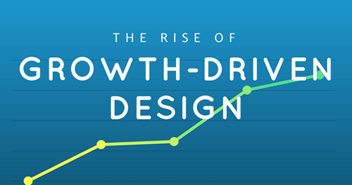7 Things We've Learned From Breaking Up With Traditional Web Design
It's not you, it's us.
As an agency, we've grown exponentially in just five years. In the past year, we've learned that the traditional model of building websites no longer works. Ever since we broke up with the traditional model, everything has changed for us as a marketing agency.
Here are the top seven things we have learned after breaking up and moving on from traditional web design.
7 Reasons To Stop Using Traditional Web Design
1. Analytics Not Assumptions
As a graphic designer, we are trained to think that we know exactly what's best for every client. We are the experts after all. We act on our assumptions but end up alienating our end user; their experience isn't being considered. We have to grow from being just a web designer to UI/UX designer.
We should be designing products that make people feel good and that resonate with them in every cycle of their buyer's journey.
.jpg?width=600&name=online-advertising-analytics%20(2).jpg)
2. Cutting a Slice Out Of The PIE (Analysis)
We love PIE — PIE Analyses that is. We create a custom PIE Analysis for every website we create.
What does PIE stand for? Potential, Importance, and Ease. We also evaluate the 20% of your current site that makes up 80% of the impact for your users.
We use the PIE score from our analysis to choose the first round of pages for your launchpad site (foundational site).
3. Quality Over Quantity
Now that we have the most important pages down, you may be wondering why we are building an "unfinished website."
We want to make sure we are producing the highest-performing pages for your users. Your launchpad site hosts the core functionality your users need to interact with you. For example, instead of designing 25 low-to-mid quality pages, we create eight high-quality pages.
The best part of what we've learned is that the job is never done. We will talk more about this later.
4. Build Features That Have a Purpose
Putting animation on your buttons, icons, and hero images seem to be the big trend these days. However, special effects can slow down your site's load time. Instead of trying to fill your site with cool features, think about features that will engage your customers and lead them through the sales funnel.

5. Measure Data
Before we launch your new site, we measure the analytics of your old site and set these stats as a benchmark. Once we launch your new site, we use HubSpot Analytics tools, Google Analytics, and Hotjar.
We measure this data so we can make relevant tweaks to your website. We study customer behavior and interactions, and make improvements based on our discoveries instead of assumptions.
6. Launch Quicker
With launchpad sites, our goal is to launch your new site quickly and better than before. We do that by creating a small launchpad site. This isn't an incomplete site by any means. It's like the foundation of your home, the first piece in something much bigger.
7. Live In Continuous Improvement
Just like your home, a website is something you have to maintain. Updating content, images and icons help keep your site looking fresh, modern and pertinent.
After we get your launchpad site up and running, we utilize the data we’ve mined, and create or change features to nudge customers along their journey. Then we continue to study them, along with the rest of your site, and repeat the process as necessary.

During this time, we also start building your next round of pages and conducting the same type of user research on them as well.
Are you ready to change your mind about the way your company has been approaching web design?
Click here to read about Growth-Driven Design, one of HubSpot's newest methodologies that will help you break up with traditional web design.
Or schedule a call with us here at ROI Online! We can help guide you through this change, and help you clarify your message.
gif by GIPHY






